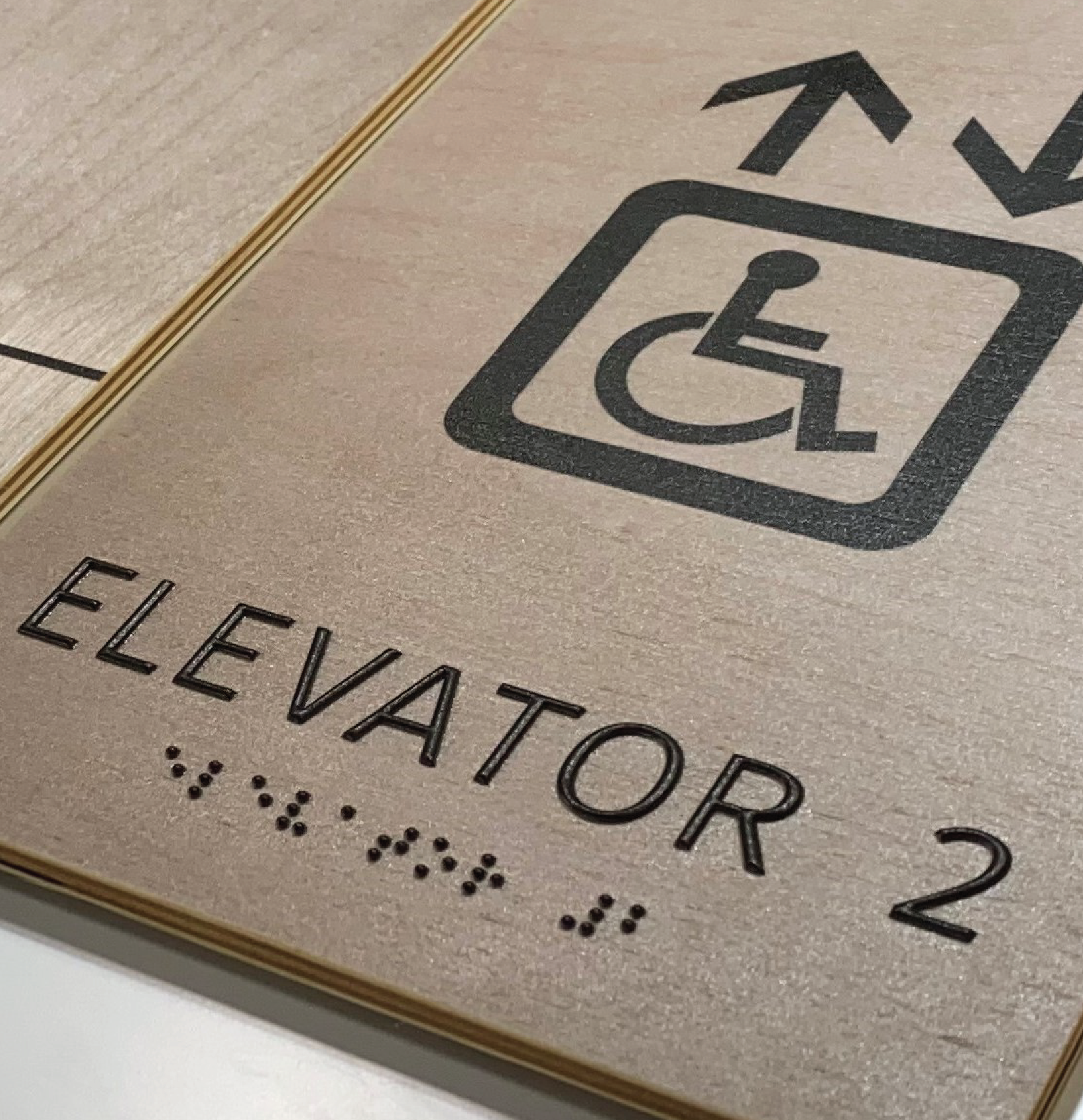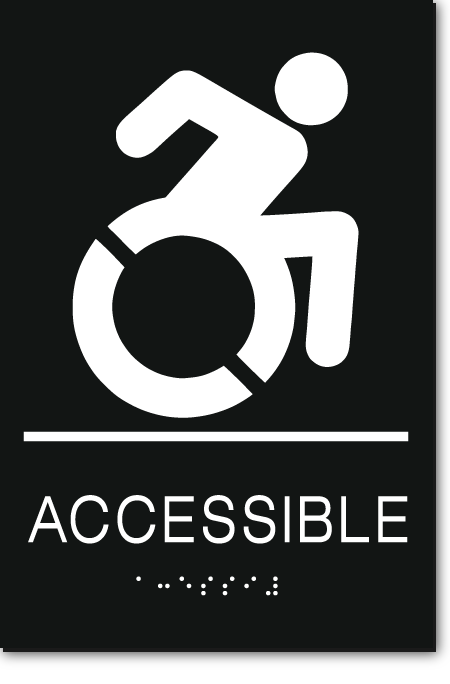Tailoring ADA Signs to Fulfill Your Certain Requirements
Tailoring ADA Signs to Fulfill Your Certain Requirements
Blog Article
Checking Out the Trick Functions of ADA Indicators for Improved Accessibility
In the realm of ease of access, ADA signs serve as silent yet powerful allies, ensuring that rooms are inclusive and navigable for individuals with handicaps. By integrating Braille and responsive components, these signs break obstacles for the aesthetically impaired, while high-contrast color pattern and clear font styles deal with varied aesthetic demands. Additionally, their calculated placement is not arbitrary however rather a computed initiative to assist in smooth navigation. Yet, beyond these features lies a deeper story concerning the development of inclusivity and the ongoing commitment to producing fair areas. What more could these signs indicate in our pursuit of global ease of access?
Significance of ADA Conformity
Making sure compliance with the Americans with Disabilities Act (ADA) is critical for cultivating inclusivity and equivalent gain access to in public areas and offices. The ADA, enacted in 1990, mandates that all public centers, companies, and transport solutions accommodate individuals with impairments, ensuring they delight in the exact same legal rights and chances as others. Conformity with ADA requirements not just fulfills legal commitments however also enhances an organization's track record by showing its commitment to variety and inclusivity.
Among the essential elements of ADA conformity is the execution of easily accessible signage. ADA indications are made to ensure that people with impairments can conveniently navigate with rooms and structures. These indications need to adhere to specific guidelines concerning size, font, color contrast, and placement to assure visibility and readability for all. Correctly carried out ADA signs assists get rid of barriers that people with specials needs commonly come across, consequently promoting their independence and confidence (ADA Signs).
Moreover, sticking to ADA regulations can reduce the danger of potential penalties and legal repercussions. Organizations that fall short to adhere to ADA guidelines might deal with lawsuits or fines, which can be both destructive and economically challenging to their public picture. Hence, ADA compliance is indispensable to cultivating an equitable setting for everybody.
Braille and Tactile Components
The consolidation of Braille and responsive components into ADA signs personifies the principles of access and inclusivity. These functions are vital for people that are visually damaged or blind, allowing them to navigate public areas with better self-reliance and confidence. Braille, a tactile writing system, is crucial in offering composed information in a style that can be conveniently perceived with touch. It is normally put under the corresponding text on signage to make certain that people can access the information without aesthetic aid.
Tactile aspects expand past Braille and consist of elevated symbols and characters. These components are designed to be noticeable by touch, permitting individuals to identify space numbers, bathrooms, departures, and other essential locations. The ADA establishes certain guidelines concerning the size, spacing, and placement of these responsive aspects to enhance readability and guarantee uniformity throughout different settings.

High-Contrast Color Design
High-contrast color pattern play a critical role in boosting the exposure and readability of ADA signs for individuals with aesthetic disabilities. These systems are necessary as they make the most of the distinction in light reflectance in between message and background, making sure that indications are conveniently discernible, also from a distance. The Americans with Disabilities Act (ADA) mandates making use of particular shade contrasts to suit those with limited vision, making it a vital aspect of compliance.
The efficacy of high-contrast shades depends on their capability to stand apart in numerous lighting problems, consisting of dimly lit settings and areas with glare. Commonly, dark text on a light background or light message on a dark history is utilized to accomplish optimal comparison. Black text on a white or yellow history gives a stark visual distinction that assists in quick acknowledgment and understanding.

Legible Fonts and Text Size
When considering the style of ADA signage, the selection of readable typefaces and ideal message size can not be overstated. These components are important for check it out ensuring that indicators are obtainable to individuals with aesthetic impairments. The Americans with Disabilities Act (ADA) mandates that fonts have to be sans-serif and not italic, oblique, manuscript, very attractive, or of uncommon type. These needs assist guarantee that the message is conveniently legible from a range which the characters are distinct to diverse audiences.
According to ADA standards, the minimum text elevation must be 5/8 inch, and it must boost proportionally with checking out distance. Uniformity in text size contributes to a natural aesthetic experience, assisting people in navigating settings effectively.
Additionally, spacing in between lines and letters is integral to clarity. Ample spacing prevents characters from showing up crowded, improving readability. By sticking to these requirements, designers can dramatically improve availability, making certain that signage offers its desired objective for all individuals, regardless of their aesthetic abilities.
Reliable Placement Approaches
Strategic positioning of ADA signs is crucial for making best use of accessibility and guaranteeing conformity with legal criteria. Properly located indications lead people with handicaps efficiently, promoting navigation in public areas. Secret factors to consider include elevation, visibility, and proximity. ADA guidelines stipulate that signs need to be mounted at a height between 48 to 60 inches from the ground to guarantee they are within the line of sight for both standing and seated individuals. This common elevation variety is essential for inclusivity, making it possible for mobility device individuals and individuals of varying elevations to gain access to information easily.
Furthermore, indications have to be placed adjacent to the latch side of doors to enable very easy recognition before entry. This placement helps individuals situate rooms and areas without obstruction. In situations where there is no door, signs should be situated on the nearest adjacent wall surface. Uniformity in sign placement throughout a facility boosts predictability, lowering complication and enhancing general user experience.

Final Thought
ADA signs play a crucial function in advertising ease of access by incorporating attributes that attend to the needs you can try this out of individuals with handicaps. These components collectively foster a comprehensive atmosphere, underscoring the importance of ADA conformity in ensuring equivalent accessibility for all.
In the realm of accessibility, ADA signs serve as quiet yet powerful allies, making certain that areas are accessible and inclusive for people with disabilities. The ADA, enacted in 1990, mandates that all public centers, companies, and transportation services fit individuals with handicaps, guaranteeing they delight in the same legal rights and chances as others. ADA Signs. ADA indications are designed to ensure that people with impairments can easily navigate through rooms and buildings. ADA guidelines specify that indicators must be mounted at an elevation between 48 to 60 inches from the ground to guarantee they are within the line of sight for both standing and seated people.ADA signs play a vital duty in promoting access by integrating features that deal with the demands of individuals with handicaps
Report this page